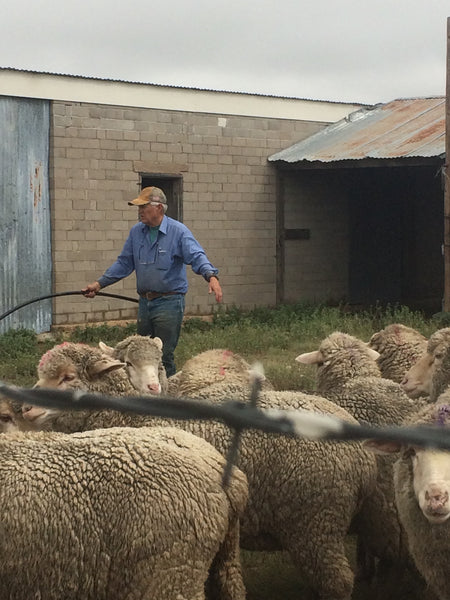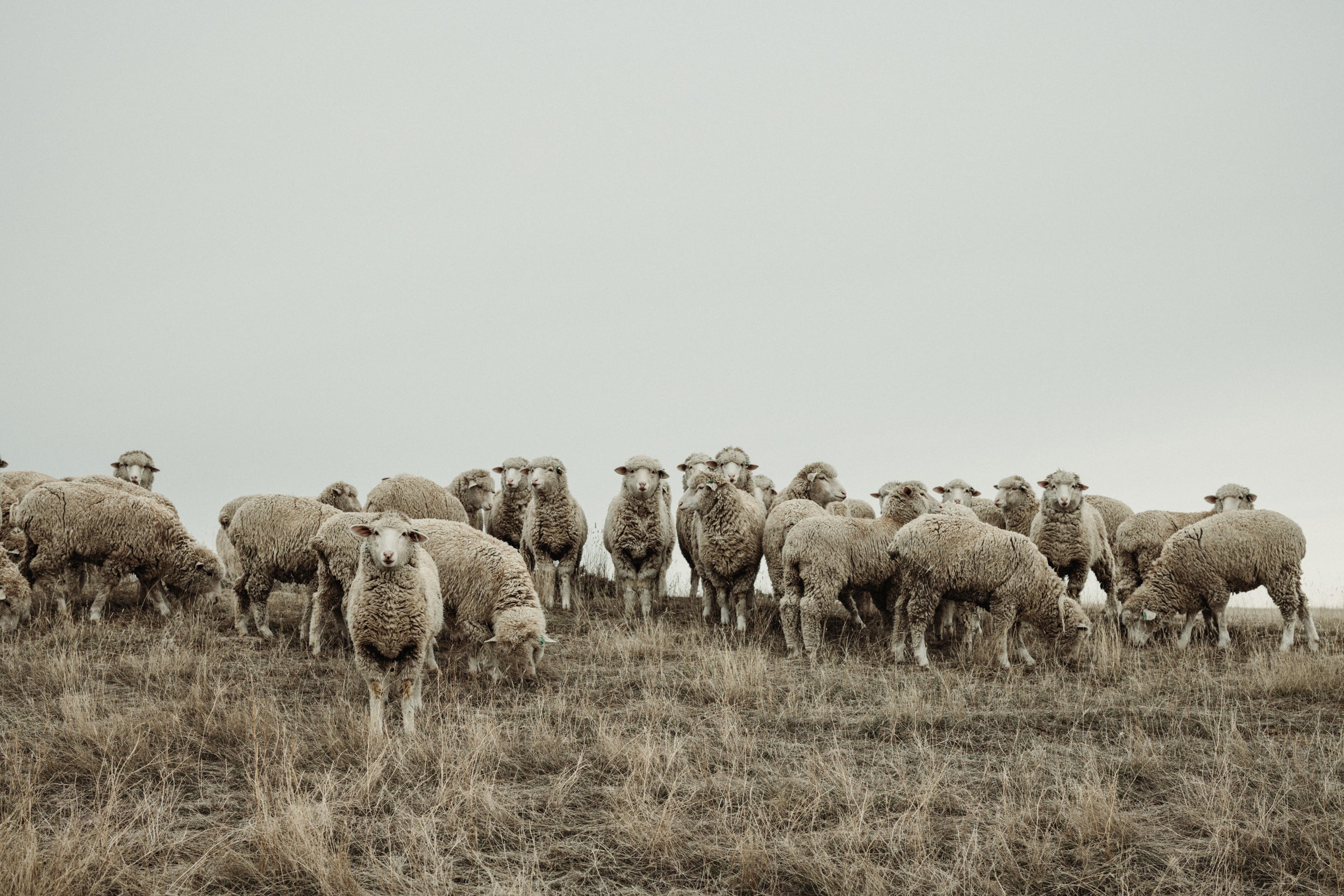[Please click to return to the main Ranches page.]
The Jones Ranch is for us a new source of wool in 2020. In June of 2020 I had a great, long telephone call with Dirk Jones. It was gratifying to learn that Dirk had already done some research on WeatherWool!
I told Dirk we'd like to introduce his Ranch here on the website, and he sent this info to me on 8 July 2020:
Amos Dee Jones first became involved the sheep business in 1890 when he moved from Texas to Southeastern New Mexico, an area with an arid environment and tremendous temperature fluctuations. After working several years as a sheep herder and ranch hand, he established the Jones Ranch in New Mexico in 1917.
After decades of sheep breeding experience, Mr. Jones in 1920 started crossing Delaine Merino rams with Rambouillet ewes. By selective mating, Mr. Jones produced a long stapled, fine wooled sheep with a large, smooth body.
Dee Jones died in 1943, but his breeding program was carried on by his son, R.C. “Punch” Jones. Following many years of this highly selective breeding program, Mr. Jones’ ideal sheep became a reality and the breed known today as the “Debouillet”.
In 1955, the United States Department of Agriculture officially recognized the Debouillet breed, the first breed of sheep recognized by USDA as originating in the United States. The breed characteristics as described by the USDA are: producing a high quality fine wool fleece, hardy under arid conditions, and adaptable to unassisted pasture lambing. Over the ensuing years, fleeces originating from the Jones Ranch have won numerous awards at stock shows and wool shows throughout the western United States.
The Jones Ranch is currently operated by Dee Jones’ grandson, Dirk Jones and his family, with the assistance of his sister, Debbie Jones. Debbie refers to the ewes and lambs as her “family”. The “family” continues to reside on a little over 20,000 acres [8000 hectares] near Tatum, New Mexico.


Above, per Dirk Jones: "... that is me with the switch. We are in the process of sorting/classifying the ewes. We classify according to wool quality and body conformation."
"The LUCO machine in the background is a wool press, where the wool in compressed into the bales that are delivered to the warehouse. In the photo is my son, July( a junior studying engineering at Texas Tech University), me, and my youngest daughter, Tara( a junior in high school). Oh, I should mention my Australian Shepard, Ellie, is also in the pic. She is my working dog. The photo was taken in our shearing barn. We typically shear mid to late February."
"There are four shearers in this photo. The other two are the 'wool handlers' who pick up the fleece, remove the belly wool, and place the fleece into the wool press. They also keep the shearing area clean."
"In this photo is my oldest daughter, Chaundra, and a hired hand. They are making sure the pens next to the shearers stay full."
"The dog is a house pet, named UB. He loves to get into the fleeces and cuddle up, especially when it is cold."
"I can't say for sure when the last photo was taken. My guess is it was in December. Debouillet actually came from combining Delaine Merino with Rambouillet."
Here is the text of a Facebook post (20 August 2021) from the New Mexico Farm & Ranch Heritage Museum:
The Jones Ranch, near Tatum, N.M.
When it comes to agriculture, there aren’t many things in our state that are more New Mexico True than Debouillet sheep. The breed originated in southeastern New Mexico, and the Museum has three Debouillet ewes, a ram, and a lamb, among its livestock collection.
Debouillet sheep were developed by the late Amos Dee (A.D.) Jones of Roswell and Tatum. In 1920, Jones began crossing Ohio Delaine rams on his herd of 5,500 Rambouillet ewes. These ewes were an exceptional herd of commercial sheep. By selective breeding, Jones produced a long-stapled, fine-wooled sheep with a large, smooth body. As a firm believer in this method of sheep improvement, he produced an ideal sheep by combining the length of the staple and character of the Delaine fleece with the large body of the Rambouillet.
After many years of highly selective breeding, Jones’ new breed of sheep became a reality known as the Debouillet. The name is derived from the names of the two component Merino breeds, “De” taken from the Delaine and “bouillet” from Rambouillet. The name was given to the breed by Jones’ wife, Portia, in 1947.
Today the Jones’ Ranch, in Tatum is operated by A.D. Jones’ son Ralls (Punch) and Ralls daughter, Deb, and son, Dirk. The Museum’s ewes came from their ranch.
Debouillet sheep are known for their bright, white wool. The fleece of the breed weighs between 10-18 pounds and measures from 3 to 5 inches in length. The wool is described as being deep and close crimped. “Crimp” refers to the bends in the individual wool fibers that give wool its “kinky” appearance. The finer the wool, the more crimps per inch.
The Debouillet breed is large and well-adapted to desert and semi-arid rangelands. Debouillet, along with the Rambouillet breed, account for the majority of sheep in New Mexico and Texas.
The Debouillet Sheep Breeders Association was organized in September of 1954 and was officially recognized by the U. S. Department of Agriculture in 1955.
27 August 2021 --- Ralph, and Dirk Jones (THANKS, Dirk!!)








